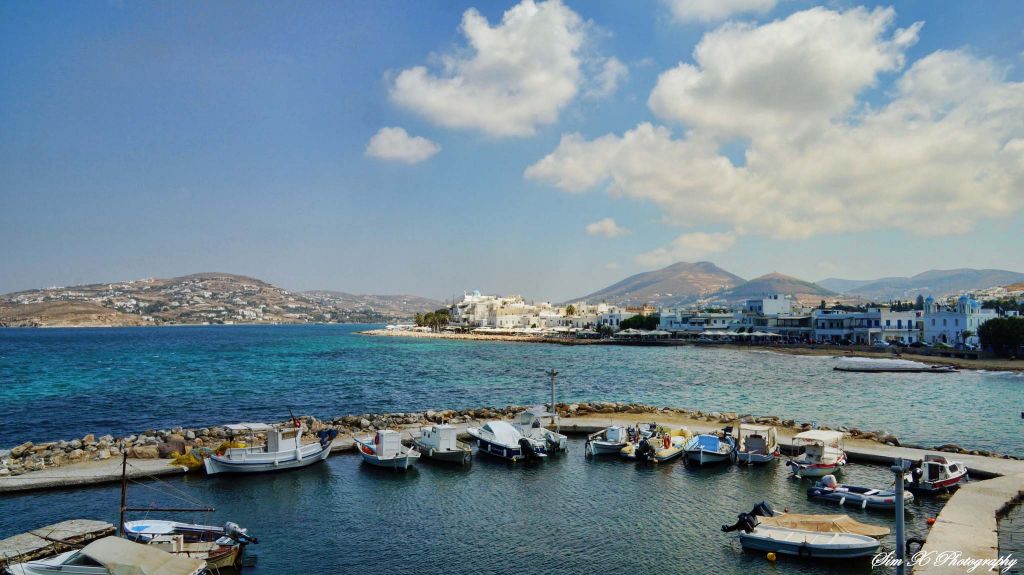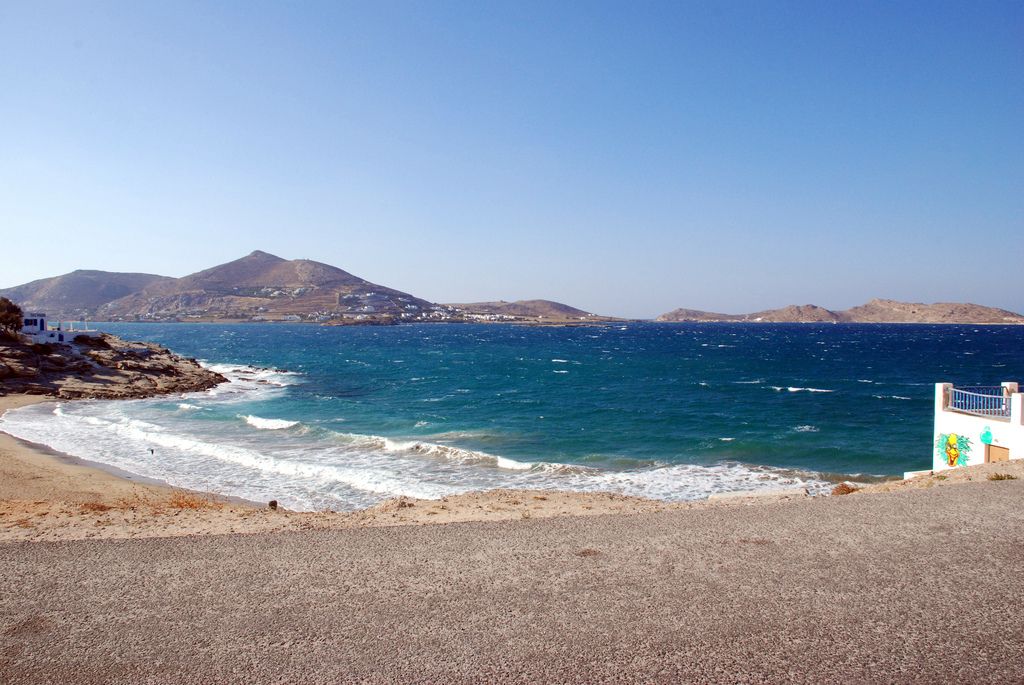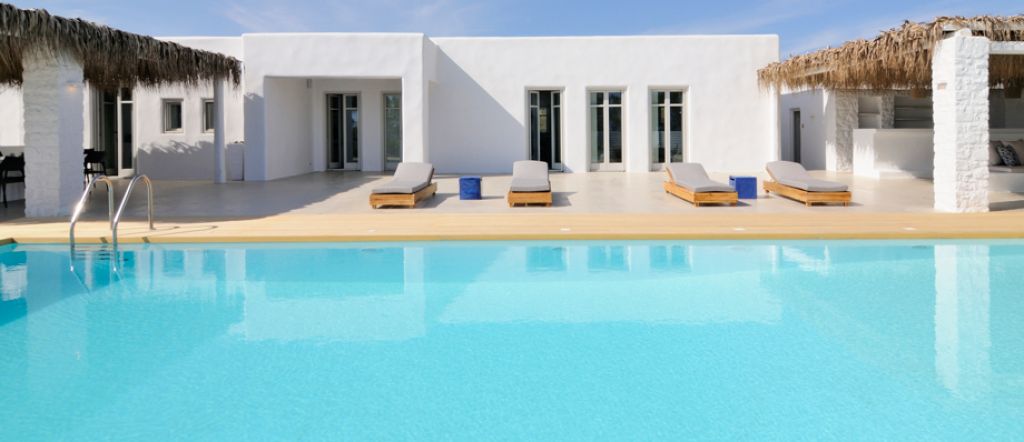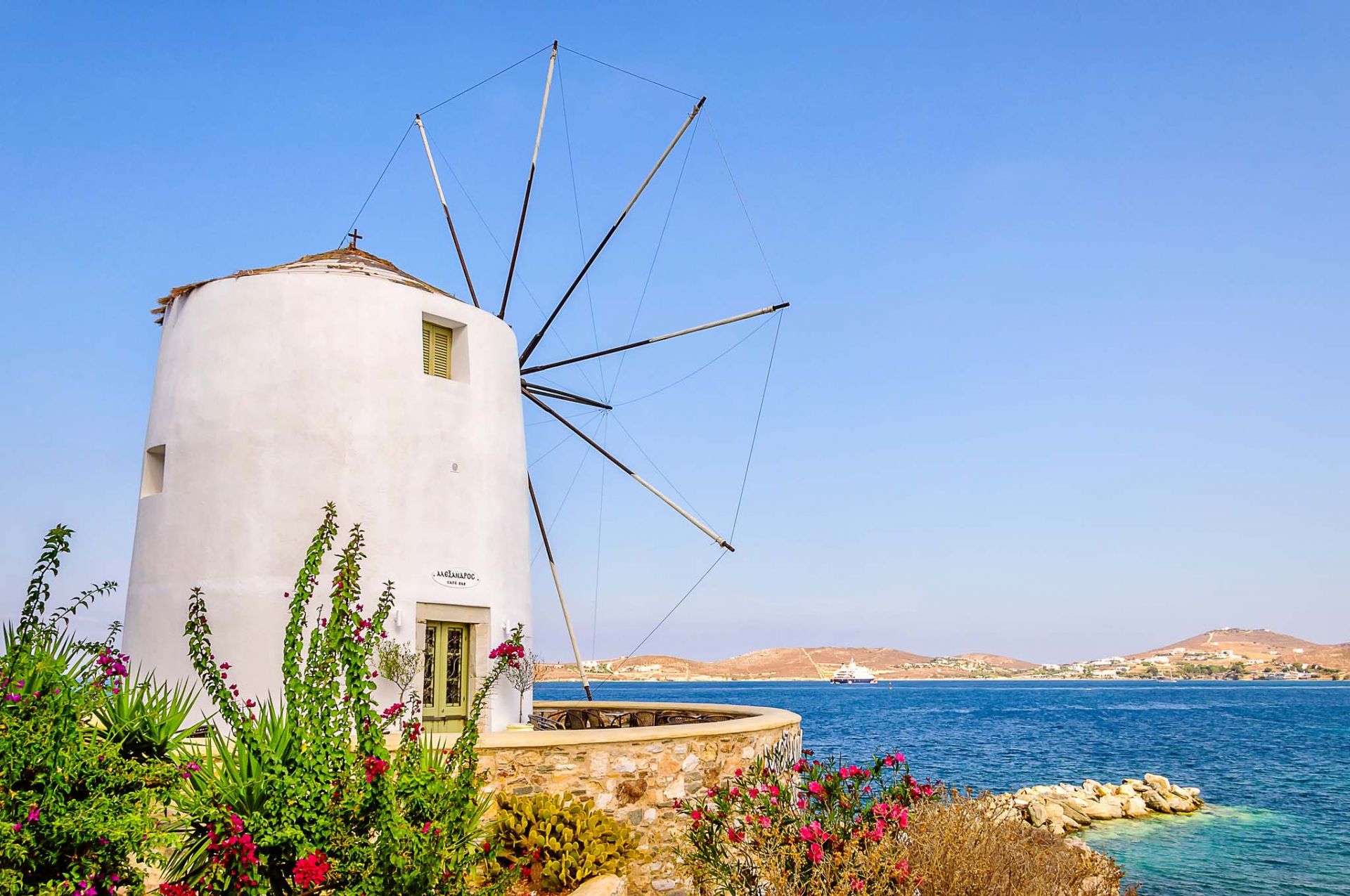Paros is the island of the archipelago that more than any other knows how to embody the spirit and characteristics of the Cyclades, starting with the picturesque architecture. Today we will discover the two most important centers of the island that embody this Greek spirit and that surely deserve a visit.

Parikia is the capital of the island and is located on the west coast. In Parikia there is the largest port of the island and for this there is a large tourist traffic during the summer. It is the typical Cycladic country; built on the ancient city. There are narrow paved streets, two-story white houses with lots of flowers, churches, and windmills. From the port, the main shopping street leads into the heart of the city, where you can find many shops. In the western part of Parikia, the Ekatontapiliani church, dedicated to the Virgin Mary and the jewel of Paros, has been located for 1600 years. The archaeological museum, the ancient cemetery, and the Frankish castle are just three of the Byzantine monuments that can be visited. Also You can walk to the most famous beaches of Parikia, Krios, and Livadia. On the island there are numerous art, music and sports events, galleries and art schools and more.

Naoussa is the second capital of Paros, and is a small port in a sheltered bay that opens onto the northern coast of the island. Despite the development of tourism, the small town continues to live on fishing, as seen by the numerous gulets at the mooring in its bay. The pier is the center of the tourist life of Naoussa and the old warehouses where once the fishermen used to store their tools have been transformed into nightclubs and bars where you can taste delicious "mezedes" (snacks) based on fish and accompanied by the inevitable ouzo (traditional liqueur).
Beyond the quay there is a network of narrow streets lined with white houses.
For those who love photography, do not miss the 14th century castle, whose remains lie partially submerged on the sea floor. Nearby you can admire the ancient pario marble quarries, the Longovarda Monastery and Christou Dassous.
Traces of a Minoan settlement have been found on the Koukounaria hill, demonstrating the antiquity of the settlement, while in Plastira, a cemetery dating back to the Protocicladic period with its characteristic figurines was unearthed. On the islet of Ikonomos a fortified settlement of the VIII century BC was found. In the Byzantine era it was taken by pirates who made it their own den. In 1770 Russian officers settled there.

Naoussa is also a good base for excursions in the summer months, on foot to the nearby beaches or by car or by boat to more remote beaches. The most famous beaches near Naoussa are those of Kolimbithres, from the granite rocks that form a lunar landscape, and Monastiri, from the calm and shallow waters where you can swim, sunbathe and have lunch in one of the many local fish taverns or participate in one of the water sports offred.
Every summer, on the first Sunday of July, the wine and bread festival is organized. A big party is also the Night Corsara, August 23, with the representation of the looting of the country by pirates. At the end, fireworks, celebrations and lots of wine accompany the sea specialties for everyone.

If you want to really make your holiday in paros special, come and discover our list of exclusive villas and services on the island.

